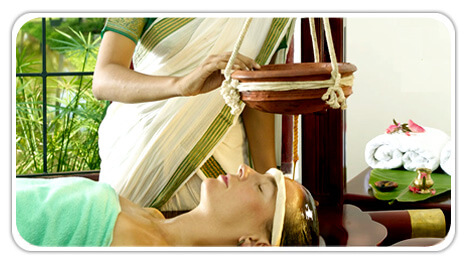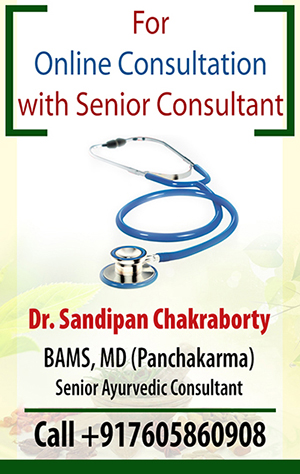
Panchakarma Treatment in Kolkata
Panchakarma Chikitsa is a cornerstone of Ayurvedic medicine, offering a holistic detoxification and rejuvenation program aimed at restoring balance and health. "Panchakarma" translates to "five actions" or "five treatments," referring to the five primary procedures designed to cleanse the body of toxins (ama) and restore dosha balance (Vata, Pitta, and Kapha).
 Objectives of Panchakarma
Objectives of Panchakarma
- Detoxification: Elimination of accumulated toxins from the body.
- Rejuvenation: Revitalization of tissues and organs.
- Balancing Doshas: Restoration of the natural balance of the body's energies.
- Enhancement of Immunity: Strengthening the body's natural defenses.
- Improvement of Digestion: Correction of metabolic and digestive disorders.
- Mental Clarity: Promotion of mental and emotional well-being.
Types of Panchakarma
Panchakarma consists of five main therapeutic procedures, each serving specific purposes:
- Purpose: To eliminate excess Kapha dosha from the respiratory and gastrointestinal tracts.
- Procedure: Induced vomiting through herbal preparations.
- Indications: Respiratory disorders (e.g., asthma, chronic bronchitis), skin diseases (e.g., psoriasis, eczema), and metabolic disorders (e.g., obesity).
- Purpose: To expel excess Pitta dosha from the body, particularly from the liver and intestines.
- Procedure: Induced purgation using herbal laxatives.
- Indications: Digestive disorders (e.g., chronic acidity, indigestion), liver disorders (e.g., hepatitis, jaundice), and skin conditions (e.g., acne, dermatitis).
- Purpose: To balance Vata dosha and cleanse the colon.
- Procedure: Administration of herbal decoctions or oils through the rectum.
- Types:
- Niruha Basti: Decoction-based enema.
- Anuvasana Basti: Oil-based enema.
- Indications: Neuromuscular disorders (e.g., arthritis, sciatica), digestive issues (e.g., constipation, IBS), and reproductive health (e.g., infertility, menstrual disorders).
- Purpose: To cleanse and open the channels of the head and neck.
- Procedure: Administration of medicated oils or powders through the nostrils.
- Indications: Respiratory issues (e.g., sinusitis, nasal congestion), neurological disorders (e.g., migraine, epilepsy), and psychological issues (e.g., anxiety, depression).
- Purpose: To remove impure blood and balance Pitta dosha.
- Procedure: Bloodletting through various methods, including leech therapy and venesection.
- Indications: Blood disorders (e.g., hypertension, hematochromatosis), skin diseases (e.g., eczema, acne), and inflammatory conditions (e.g., gout, arthritis).
Preparatory and Post-Therapeutic Procedures
- Snehana (Oleation Therapy): Internal and external application of oils to loosen toxins.
- Internal Snehana: Ingestion of medicated ghee or oils.
- External Snehana: Oil massage (Abhyanga).
- Swedana (Sudation Therapy): Induced sweating to further loosen and mobilize toxins.
- Types of Swedana: Steam bath, sauna, warm oil massage.
- Samsarjana Krama: Gradual diet and lifestyle modifications to restore normal digestion and metabolism.
- Rasayana Therapy: Rejuvenation treatments and herbal supplements to enhance vitality and immunity.
- Detoxification: Removes deep-seated toxins and impurities.
- Improved Digestion: Enhances digestive fire (Agni) and metabolism.
- Enhanced Immunity: Strengthens the immune system.
- Mental Clarity: Promotes mental peace and emotional stability.
- Rejuvenation: Revitalizes body tissues and organs.
- Balancing Doshas: Restores the natural balance of Vata, Pitta, and Kapha.
Conclusion
Panchakarma is a comprehensive Ayurvedic therapy that focuses on detoxification and rejuvenation, aiming to restore balance and harmony within the body. Each of the five primary treatments is tailored to address specific health issues and dosha imbalances. By incorporating Panchakarma into a holistic health regimen, individuals can achieve improved physical health, mental clarity, and overall well-being. For optimal results, it is essential to undergo Panchakarma under the guidance of a qualified Ayurvedic practitioner. At Ayusya Ayurveda, we have a team of qualified and experienced doctors and therapists to help you recover from the problem.
Contact us!
We are happy to help you..
Book Appointment
- Ultadanga Book appointment
- Gariahat Book appointment
- Howrah Book appointment

Subscribe to our Newsletter
Book Appointment
-
Ultadanga
 (0)9831775590
Book appointment
(0)9831775590
Book appointment
-
Gariahat
 (0)9831775590
Book appointment
(0)9831775590
Book appointment
-
Howrah
 (0)9831775590
Book appointment
(0)9831775590
Book appointment
Call
-
Ultadanga
 (0)9831775590
(0)9831775590
-
Gariahat
 (0)9831775590
(0)9831775590
-
Howrah
 (0)9831775590
(0)9831775590


